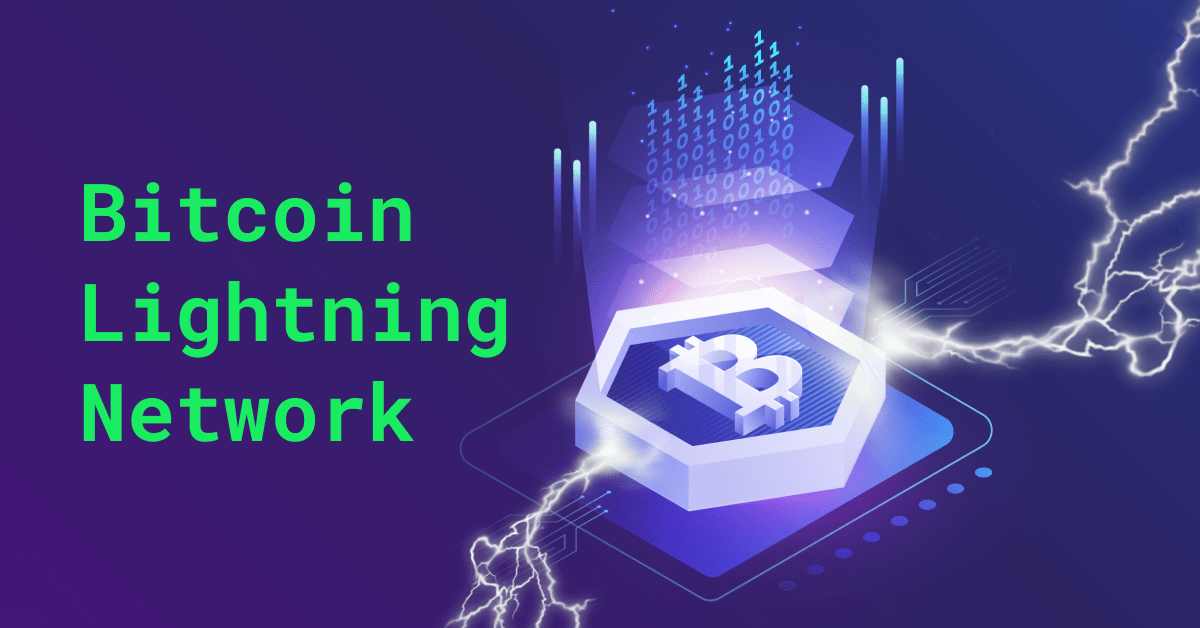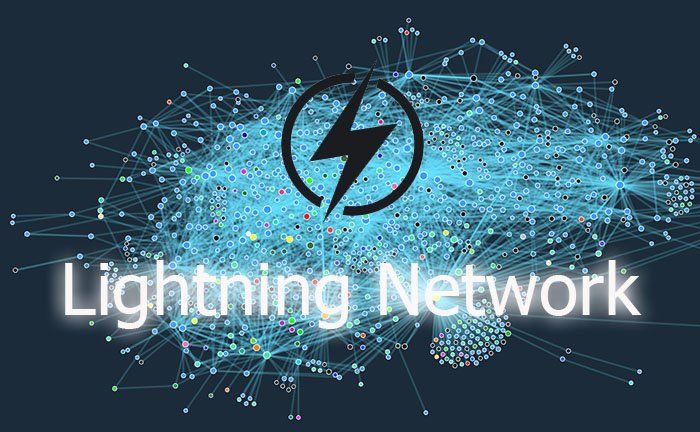Understanding the Functionality of Bitcoin Lightning Network

The digital currency landscape is rapidly evolving, introducing innovative solutions that aim to enhance the user experience. One such advancement is designed to address the challenges associated with conventional transaction processing, particularly in terms of speed and costs. By enabling quicker exchanges, this system promises to transform the way individuals engage with digital assets.
At its core, this approach allows parties to conduct transactions without the need for every single exchange being recorded on a public ledger. Instead, it creates a mechanism for off-chain operations that significantly reduces the burden on the underlying architecture. This opens up a host of possibilities for users seeking both efficiency and cost-effectiveness in their digital dealings.
Moreover, this sophisticated infrastructure facilitates microtransactions, making it feasible for users to send minimal amounts without incurring prohibitive fees. The implications for retailers and service providers are profound, as they can now offer new payment models that cater to a wider audience, enhancing overall accessibility to financial services in the digital age.
What is the Bitcoin Lightning Network?
This innovative solution enhances the capabilities of a cryptocurrency, allowing for quicker and cheaper transactions. It addresses the challenges posed by scalability, enabling a more efficient interaction among users. By leveraging a unique approach, this system creates a layer above the original protocol, facilitating seamless exchanges and low-latency transfers.

Key Characteristics
- Instant payments between parties
- Reduced transaction fees compared to traditional methods
- Ability to handle a high volume of transactions
- Privacy-enhancing features
How It Works
- Two participants open a payment channel and deposit funds to facilitate transactions.
- They can conduct multiple exchanges off-chain, which are not recorded on the main ledger.
- Once they decide to close the channel, the final balance is settled on the original blockchain.
This setup not only minimizes congestion but also ensures that users can transact with ease, enjoying a user-friendly experience in the realm of digital currencies.
Benefits of Using Lightning for Transactions
The adoption of innovative payment solutions offers numerous advantages for users engaged in digital currency transactions. A novel approach to processing microtransactions provides efficiency, enhanced speed, and reduced costs, addressing some common limitations faced by traditional methods.
First and foremost, the enhanced speed of transactions is a significant advantage. Payments can be settled almost instantaneously, allowing users to avoid the typical waiting periods that come with conventional processing times. This immediacy is particularly beneficial for retail scenarios and time-sensitive exchanges.
Additionally, lower fees play a crucial role in attracting users. By minimizing transaction costs, especially for smaller amounts, this method makes it economically feasible for everyday transactions. This aspect encourages more frequent use and helps promote digital currency as a viable alternative to traditional payment systems.
Furthermore, the method of conducting transactions off-chain can lead to improved scalability. This innovation enables the underlying system to handle a significantly larger volume of transactions, reducing congestion and ensuring that the network remains responsive even during peak times.
Moreover, implementing this innovative payment approach enhances privacy. By not broadcasting each transaction on the main ledger, users can engage in exchanges with a greater degree of anonymity, appealing to those who prioritize confidentiality in their financial activities.
In conclusion, leveraging this advanced transaction method provides users with faster, cheaper, and more scalable options while enhancing their overall privacy. These benefits contribute to a more seamless experience, making digital currency more practical and accessible for everyday use.
How Lightning Network Enhances Scalability
The evolution of decentralized currency systems has highlighted the importance of efficient transaction processing. A significant challenge faced by these platforms is the ability to handle increasing numbers of transactions without compromising speed or cost. Innovative solutions are essential for improving this aspect, paving the way for a more robust financial ecosystem.

Off-Chain Transactions
One of the primary advancements involves processing transactions off the main blockchain. By enabling users to engage in direct exchanges, this mechanism drastically reduces the load on the primary ledger. As a result, multiple transactions can be conducted simultaneously without needing to wait for confirmation on the main chain. This efficiency not only enhances user experience but also contributes to lower transaction fees.
Instantaneous Settlements
Additionally, the incorporation of instantaneous settlements transforms the way value is transferred. Users can enjoy immediate confirmations, allowing for rapid exchanges and enhancing the usability of the system in real-world applications. The ability for transactions to be conducted quickly encourages more significant participation and boosts overall throughput, which is crucial for widespread adoption. This ability to scale effectively ensures that the system remains viable even as usage grows exponentially.
Key Components of the Lightning Protocol
The architecture of this innovative layer includes several crucial elements that work in unison to facilitate swift and cost-effective transactions. Each component plays a vital role in ensuring the seamless operation of the system, enhancing user experience while maintaining security and efficiency.
Payment Channels serve as the backbone by enabling two parties to transact off-chain. This allows for multiple transactions to occur between users without needing to record each one on the main ledger, drastically reducing the network’s congestion.
Hash Time-Locked Contracts (HTLCs) introduce a layer of security by requiring cryptographic proof for fund transfers. These contracts ensure that a payment can only be claimed by the intended recipient after certain conditions are met, while also providing a mechanism to reclaim funds if the transaction does not complete within a specified timeframe.
Routing mechanisms are essential for directing payments across the system. They determine the optimal paths for transactions, allowing users to send funds even if they do not have a direct channel established with the recipient. This flexibility is key to expanding the reach of the payment system.
Nodes function as connection points within this ecosystem, each maintaining an updated ledger of its channels and balances. They facilitate the communication required to execute transactions and provide connectivity between participants.
In conclusion, the intricacies of these components demonstrate how they collaboratively enhance the capabilities of the protocol, enabling a decentralized environment for efficient and rapid financial exchanges.
Real-World Use Cases of Lightning Network
The adoption of advanced payment solutions has opened up a myriad of practical applications that enhance everyday transactions. These innovative systems provide a seamless experience for users, allowing for rapid and efficient exchanges of value. This section explores various scenarios where such solutions can transform the way individuals and businesses interact financially.
One of the most notable applications can be found in microtransactions, enabling users to send small amounts of currency with minimal fees. This capability is ideal for content creators who wish to monetize their work through tips or subscriptions. Additionally, artists and musicians can receive instant payments for their creative efforts, fostering a direct relationship with their audience.
E-commerce platforms have also begun integrating these solutions to improve customer experience. By facilitating instant payments, merchants can gain a competitive edge while reducing chargebacks and fraud risks. This ensures that consumers can complete their purchases quickly, which is crucial in today’s fast-paced online shopping environment.
Another significant use case lies in remittances. Individuals sending money across borders can benefit from lower transaction costs and quicker settlement times, making financial support for families abroad more accessible. This innovation can profoundly impact those in underbanked regions, helping to increase financial inclusion.
Moreover, the integration of these systems into gaming platforms allows for real-time transactions within digital environments. Players can easily buy in-game items or transfer currency, enhancing their overall experience. This opens up new revenue streams for developers while ensuring a smooth user journey.
In summary, the versatility of these advanced payment solutions presents diverse opportunities across various sectors. From microtransactions to remittances and e-commerce, their potential to reshape financial interactions is immense, paving the way for a more connected global economy.
Challenges and Limitations of Lightning Technology
The implementation of this innovative solution brings numerous benefits, yet it also presents certain obstacles and restrictions that must be addressed. Users and developers alike need to navigate a landscape filled with intricate considerations that can impact usability and adoption.
One significant challenge lies in scalability. As transaction volumes surge, the existing infrastructure must handle increasing loads without compromising performance. This creates a need for systems that can efficiently process numerous microtransactions without delays.
Another concern is security. While protocols are designed to enhance privacy and protection, vulnerabilities may still arise. Potential attacks, such as channel hijacking or routing tampering, highlight the necessity for robust security measures throughout the ecosystem.
Liquidity issues also play a crucial role in the experience of users. Insufficient funds within payment channels can lead to failed transactions, which may hinder smooth exchanges. Consequently, effective liquidity management strategies are essential for fostering user confidence and seamless operation.

Furthermore, the usability of the platform can be impacted by the complexities involved in setting up and managing payment channels. A steep learning curve may deter new users, emphasizing the need for intuitive interfaces and educational resources to facilitate broader access.
Lastly, interoperability with other financial systems remains a consideration. Achieving seamless integration with traditional financial services and various blockchain technologies is vital for promoting widespread adoption and enhancing overall functionality.
Q&A: Bitcoin Lightning Network – How It Works
What is the Bitcoin Lightning Network and how does it work?
The Bitcoin Lightning Network is a second-layer protocol built on top of the Bitcoin blockchain that aims to enable faster and cheaper transactions. It works by creating payment channels between users, allowing them to conduct multiple transactions off-chain. When users want to transact, they can open a channel with a specific funding transaction on the Bitcoin blockchain. They can then exchange funds with each other instantly and at a low cost without needing to record each transaction on the main blockchain. The final balance is settled on-chain when the channel is closed, allowing for scalability and reducing congestion on the Bitcoin main chain.
What are the advantages of using the Lightning Network for Bitcoin transactions?
The Lightning Network offers several advantages for Bitcoin transactions. Firstly, it significantly reduces transaction fees, as users can send and receive payments without the need for costly on-chain transactions each time. Secondly, it increases the speed of transactions, allowing for instant payments rather than the typical wait times associated with on-chain transactions. Additionally, the Lightning Network enhances Bitcoin’s scalability; processing potential alongside the main chain’s block limitations, it can facilitate millions of transactions per second. This makes it an ideal solution for micropayments or day-to-day transactions, which can be impractical on the main chain due to fees and speed constraints.
How secure is the Bitcoin Lightning Network compared to the primary Bitcoin network?
The Bitcoin Lightning Network maintains a high level of security, leveraging the underlying security of the Bitcoin blockchain. However, there are different security considerations when using the Lightning Network. The transactions conducted off-chain are not secured by the blockchain until the payment channel is closed. While the risk of fraud exists, various mechanisms, such as penalty transactions for misbehaving participants and time-locks, mitigate these risks. Users are advised to stay updated with best practices and to only use the network with trusted parties or established channels to maintain security.
Can anyone use the Lightning Network, and what do I need to get started?
Yes, anyone can use the Lightning Network. To get started, you need a Bitcoin wallet that supports Lightning transactions. Many wallets are available that provide user-friendly interfaces for accessing the Lightning Network. Once you have set up a compatible wallet, you’ll need to open a Lightning channel, which involves a small on-chain Bitcoin transaction. After that, you can start sending and receiving payments instantly and at lower costs. Familiarizing yourself with how to open and manage channels is essential to make the most of the Lightning Network’s benefits.
What challenges does the Lightning Network currently face, and what future developments are expected?
The Lightning Network is still in its early stages and faces several challenges. One major issue is liquidity; for a successful transaction, there must be enough funds in the payment channels. Users can encounter difficulties if liquidity is insufficient, which can limit usability. Additionally, the complexity of opening and managing payment channels may deter non-technical users. Future developments are focused on improving user experience, enhancing privacy features, and instituting better routing algorithms to ensure more efficient transactions. With ongoing innovations, there is potential for the Lightning Network to become a widely adopted solution for everyday Bitcoin transactions in the future.
What is the Bitcoin Lightning Network and how does it work?
The Bitcoin Lightning Network is a second-layer solution designed to enhance the scalability and speed of Bitcoin transactions. It operates on top of the Bitcoin blockchain, allowing users to create off-chain payment channels for conducting frequent, small transactions without needing to record each one on the main blockchain. When two parties open a payment channel, they can make numerous transactions between themselves instantly and without incurring high fees. Only the final state of the channel is settled on the blockchain, drastically reducing the load on the network and speeding up transactions. This way, the Lightning Network not only helps alleviate congestion but also improves overall transaction efficiency.
How does the lightning network work to facilitate bitcoin payments?
The lightning network is a layer 2 solution for the Bitcoin blockchain that allows users to send and receive bitcoin instantly and with minimal fees. Developed by Joseph Poon and Thaddeus Dryja, it enables transactions via a network of payment channels. When a channel is open between two parties, they can transact off-chain without involving the main bitcoin blockchain for each transaction. Only the opening and closing transactions are broadcast to the blockchain, reducing congestion and lowering fees. This system is particularly useful for microtransactions and frequent transfers.
What is the role of payment channels in the lightning network?
Payment channels are the foundation of the lightning network. A payment channel is a connection between two parties who can send bitcoin back and forth without interacting with the main bitcoin blockchain. To open a payment channel, the parties create a smart contract and lock bitcoin in it. As long as the channel is open, they can make unlimited lightning payments. When they decide to close the payment channel, the final balances are recorded on the blockchain, ensuring that the transactions are secure and immutable.
What are the benefits of using the lightning network for bitcoin transactions?
The lightning network provides several advantages for bitcoin users. It enables near-instant transactions, making bitcoin a more practical medium of exchange for everyday purchases. Fees on the lightning network are significantly lower than on the main bitcoin blockchain, making it ideal for small or frequent payments. Additionally, the lightning network increases the scalability of the bitcoin ecosystem by reducing the load on the main blockchain, allowing it to process more transactions efficiently.
How does the lightning network ensure security in off-chain transactions?
The lightning network employs smart contracts to ensure the security of off-chain transactions. Each payment channel is governed by a multi-signature smart contract that requires both parties to agree on the transactions. If one party attempts to cheat by closing the channel with an outdated transaction, the other party can submit a penalty transaction to the main bitcoin blockchain. This mechanism discourages dishonest behavior and ensures that all transactions on the lightning network are trustworthy and reliable.
What is the role of lightning network nodes in processing transactions?
Lightning network nodes are essential for maintaining the decentralized network of payment channels. A lightning node enables users to open, route, and close payment channels while facilitating transactions between nodes. Each node helps route payments through the network, allowing users to send bitcoin even if they don’t have a direct payment channel with the recipient. This decentralized system ensures that the lightning network remains robust, efficient, and capable of processing transactions quickly.



